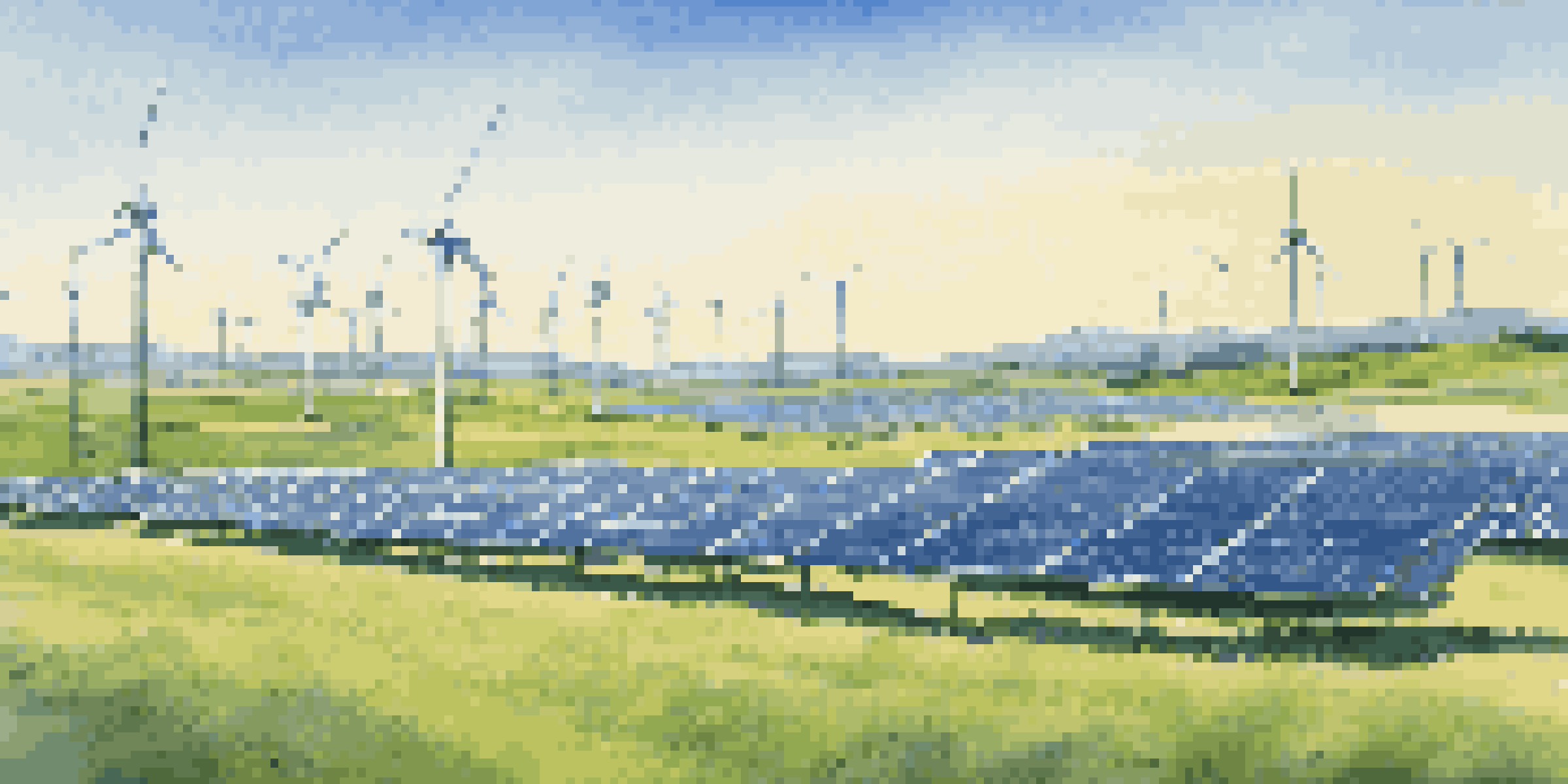Investing in Natural Resources: Global Opportunities Explained

Understanding Natural Resources and Their Importance
Natural resources are raw materials found in nature that can be used for economic gain. These include minerals, forests, water, and fossil fuels. Their significance extends beyond mere economics, touching on environmental and social factors as well.
The earth has music for those who listen.
Investing in these resources can yield substantial returns, particularly as global demand continues to rise. For instance, the growing need for renewable energy sources has sparked interest in areas like lithium and cobalt, essential for battery production. This trend reflects a shift towards sustainable practices, making natural resources investments not only profitable but also environmentally conscious.
Moreover, understanding the dynamics of supply and demand in different regions is crucial. Factors such as geopolitical stability, local regulations, and market trends can greatly influence the viability of these investments. As such, thorough research is essential for anyone looking to venture into this field.
Key Natural Resources: Types and Trends
Natural resources can be broadly categorized into renewable and non-renewable resources. Renewable resources, such as solar and wind energy, are replenished naturally, while non-renewable resources, like oil and coal, are finite. Understanding these categories helps investors identify potential growth areas in their portfolios.

Currently, the demand for renewable resources is on the rise. For example, countries are investing heavily in solar farms and wind turbines as part of their climate action plans. This shift not only demonstrates a significant investment opportunity but also aligns with the global movement towards sustainability.
Natural Resources Drive Investments
Natural resources, both renewable and non-renewable, present significant investment opportunities driven by increasing global demand.
On the flip side, non-renewable resources like precious metals and fossil fuels still present lucrative investment potential. Gold, for instance, is often viewed as a safe haven during economic downturns. Investors should keep an eye on market trends to capitalize on these opportunities effectively.
Emerging Markets: Where to Look for Opportunities
Emerging markets often present unique investment opportunities in natural resources. Countries like Brazil, India, and various African nations are rich in untapped resources, making them attractive for investors. However, these markets come with their own set of challenges, including political instability and regulatory hurdles.
Sustainability is not a trend, but a necessity.
For example, Brazil is known for its vast agricultural resources and mineral wealth, yet investors must navigate complex land ownership laws. Understanding local customs and regulations can provide a significant advantage, allowing investors to make informed decisions.
Moreover, partnering with local businesses can also enhance success rates in these regions. Collaborating with local experts can help mitigate risks and provide insights into market dynamics that may not be readily apparent to outsiders.
Risks Involved in Natural Resource Investments
Investing in natural resources is not without risks. Fluctuating commodity prices can significantly impact profitability. For instance, a sudden drop in oil prices can affect the bottom line for companies heavily invested in fossil fuels.
Additionally, environmental regulations and policies can pose challenges. Stricter regulations aimed at protecting the environment may limit extraction activities, potentially affecting returns. Investors must stay informed about regulatory changes and anticipate how these might influence their investments.
Sustainability Shapes Future Trends
The shift towards sustainable investment practices is becoming crucial, as socially-conscious investors seek to align their portfolios with environmental values.
Lastly, geopolitical risks should not be overlooked. Political unrest in resource-rich regions can disrupt supply chains and impact the stability of investments. Therefore, a well-rounded risk assessment strategy is vital for anyone looking to invest in this sector.
Sustainable Investment: The Future of Natural Resources
Sustainable investment is becoming increasingly important in the natural resources sector. Investors are now considering the long-term impact of their investments on the environment and society. This shift towards sustainability not only helps protect the planet but also appeals to a growing demographic of socially-conscious investors.
One notable trend is the rise of sustainable forestry and responsible mining practices. Companies that prioritize sustainable methods are often viewed more favorably by investors, leading to potential growth in stock value. By choosing to invest in businesses that align with these values, investors can support practices that promote environmental health.
Moreover, sustainable investments often yield competitive returns. Research shows that companies with strong sustainability practices tend to outperform their peers in the long run. This trend highlights the potential for natural resources investments to contribute positively to both financial portfolios and the planet.
The Role of Technology in Natural Resource Investments
Technology is revolutionizing the way we invest in natural resources. Innovations in extraction techniques, renewable energy, and resource management are making investments more efficient and environmentally friendly. For instance, advancements in solar technology have drastically reduced costs and improved energy output.
Moreover, data analytics plays a significant role in identifying investment opportunities. Investors can leverage big data to analyze market trends and assess risks more effectively. This data-driven approach enables more informed decision-making, leading to better investment outcomes.
Technology Enhances Investment Strategy
Innovations in technology are revolutionizing the natural resources sector, improving efficiency and transparency while aiding in informed decision-making.
Furthermore, technology can also enhance transparency in the supply chain. Blockchain, for example, is being used to track the provenance of resources, ensuring ethical sourcing. As technology continues to evolve, it will undoubtedly shape the future of natural resource investments.
Getting Started: Tips for New Investors
If you're considering investing in natural resources, starting small is often advisable. Begin by researching different types of resources and their market dynamics. Familiarizing yourself with the sectors you're interested in can help build a solid foundation for your investment strategy.
Additionally, consider diversifying your portfolio. Investing in a mix of renewable and non-renewable resources can help mitigate risks while maximizing potential returns. This approach allows you to capitalize on various market trends and reduces dependence on any single resource.

Lastly, don't hesitate to seek professional advice. Engaging with financial advisors who specialize in natural resource investments can provide valuable insights. Their expertise can guide you in making informed decisions that align with your financial goals.